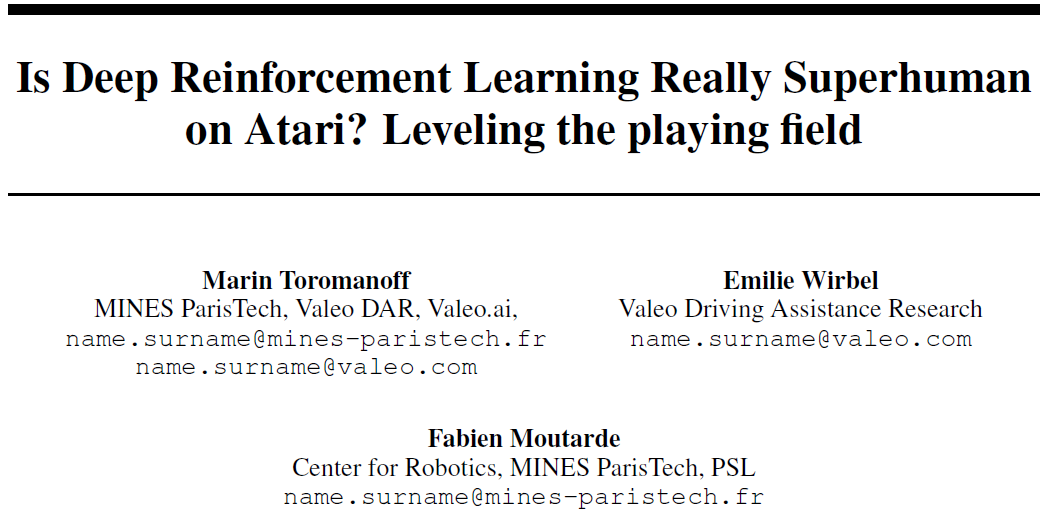Is Deep Reinforcement Learning Really Superhuman on Atari? Leveling the playing field
郑重声明:原文参见标题,如有侵权,请联系作者,将会撤销发布!

https://arxiv.org/abs/1908.04683
Abstract
深度强化学习(DRL)的一致性和可重复性评估并不简单。在街机学习环境(ALE)中,环境参数(如随机性或最大允许游戏时间)的微小变化会导致非常不同的性能。在这项工作中,我们讨论了比较接受ALE性能的不同智能体的困难。为了进一步朝着可复现和可比较的DRL迈进,我们引入了SABER,一种用于通用强化学习算法的标准化Atari基准。我们的方法扩展了先前的建议,包含一整套环境参数以及训练和测试程序。然后,我们使用SABER评估当前最优算法,Rainbow。此外,我们引入了一个人类世界记录基准,并认为先前关于DRL专家或超人表现的说法可能不准确。最后,我们通过使用隐式分位数网络(IQN)扩展Rainbow,提出Rainbow IQN,从而实现新的最优性能。源代码可用于复现。
1 Introduction
1.1 Related Work
2 Challenges when Comparing Performance on the Atari Benchmark
2.1 Revisiting ALE: an Initial Step towards Standardization
2.2 Maximum Episode Length
Glitch and bug in the ALE environment
2.3 HumanWorld Records Baseline
3 SABER : a Standardized Atari BEnchmark for Reinforcement learning
3.1 Training and Evaluation Procedures
3.2 Reporting Results
4 Rainbow-IQN
5 Experiments
5.1 Rainbow Evaluation
5.2 Rainbow-IQN: Evaluation and Comparison
Influence of maximum episode length
Comparison to Rainbow
Comparison to DQN
5.3 Stability of both Rainbow and Rainbow-IQN
6 Conclusion: why is RL that Bad at Atari Games?




 浙公网安备 33010602011771号
浙公网安备 33010602011771号